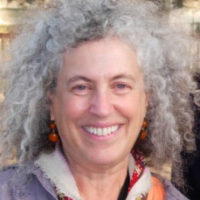
As Earth Day 2006 approaches, Barry Heimlich is worried about global warming. He lives 4 miles from the Atlantic Ocean in South Florida’s Broward County. For the millions of Floridians living in “Hurricane Alley,” increasingly severe tropical storms and rising sea levels fueled by global warming pose a real and present danger as well as a long-term threat.
“It’s a global problem, not a local one, but it’s going to manifest itself locally,” he said.
Multimillion-dollar projects to stem beach erosion in the area are fighting a losing battle, said Heimlich, who is president of the Broward County Audubon Society. “I don’t have to tell you beaches are important to the economy here. In Broward County most of the beaches have been washed away, and the same is true in Palm Beach.”
Rising sea levels pose a longer-term catastrophic threat. South Florida, one of the nation’s fastest growing metropolitan areas, is particularly vulnerable. It is basically flat. Parts of Dade County are below sea level. A 3-foot sea level rise would wipe out beaches and inundate coastal wetlands, causing flooding throughout the area. Much of the Everglades would be engulfed. Sea levels are expected to rise by up to 3 feet or more within the next 90 years as a result of global warming, as land-based ice melts and ocean temperatures rise. Some scientists say melting of ice caps and glaciers could raise sea levels as much as 25 feet.
In addition there’s the threat to the complex fresh water systems that not only maintain the Everglades but provide the region’s drinking water. “We get all our water from the fresh water aquifer about 100 feet below us,” Heimlich said in a phone interview. Intrusion of salt water from ocean flooding would “jeopardize our water supply.”
A thousand miles north in the Midwest, global warming means greater weather extremes — harsher storms, more tornados, Emily Green, senior Midwest representative for the Sierra Club, told the World. The region can expect colder winters, hotter summers and declining lake levels, spelling trouble for farmers and for Great Lakes shipping.
“The bottom line is, we’re really at a tipping point, about to set our planet on a course of no return,” Green said.
A growing volume of scientific research has shown major global climate changes over the past century, driven by human activity that is heating up the earth’s atmosphere.
“Human activities, mainly the burning of coal and oil, but also agriculture and deforestation, have dramatically increased concentrations of heat-trapping gases in the atmosphere,” Eileen Claussen, president of the Pew Center on Global Climate Change, said in a March 30 speech at Yale University. “The impacts we are seeing now — today — are happening much sooner than anyone might have anticipated even a decade ago. These changes were predicted, but even the scientists who made the predictions are surprised at the rate at which they are now occurring.”
Despite Bush administration efforts to squash the evidence, polls show increased public concern over the issue. In an ABC/Time/Stanford University poll last month more than two-thirds said the federal government “should do more than it’s doing now to try to deal with global warming.”
U.S. mayors have begun taking matters into their own hands. As of April 7, 224 mayors in 39 states had signed on to the U.S. Mayors Climate Protection Agreement, initiated last year by Seattle Mayor Greg Nickels. The U.S. Conference of Mayors endorsed the agreement at its June 2005 meeting.
In effect, the mayors are doing what the Bush administration has refused to do — endorse the Kyoto treaty goals for reducing emissions of carbon dioxide and other atmosphere-warming gases known as “greenhouse gases.” The Kyoto treaty went into effect Feb. 16, 2005, ratified by 141 countries, but not the U.S. Under the treaty, the U.S. would have been required to reduce greenhouse gas emissions 7 percent below 1990 levels by 2012.
The cities that agree to participate commit to work to meet or beat the Kyoto targets in their own communities, through actions like increasing energy efficiency, reducing vehicle miles traveled, anti-sprawl land-use policies, urban forest restoration projects and promoting use of clean, renewable energy resources. They also commit to pressing for state and federal programs and congressional action setting limits on emissions.
In signing on to the initiative, Mayor John Rayson of Pompano Beach, Fla., said, “If the U.S. government continues to ignore the rest of the world on energy then it is time for all local leaders to speak out.”
Over 300,000 people have joined a “virtual march” at StopGlobalWarming.org demanding government and corporate action. The breadth of public concern is reflected in the project’s partners, which include the Philadelphia Eagles, St. Louis Rams and IndyCar Series along with religious and environmental organizations and public figures.
“The fact is that the Bush administration and Congress have failed to take meaningful action to deal with global warming,” Glen Brand, of the Sierra Club’s Global Warming and Energy Program, told the World. “So state and local officials have stepped up. These leaders are responding to public demand. People are just sick and tired of waiting.”
“The public wants action,” he said.







